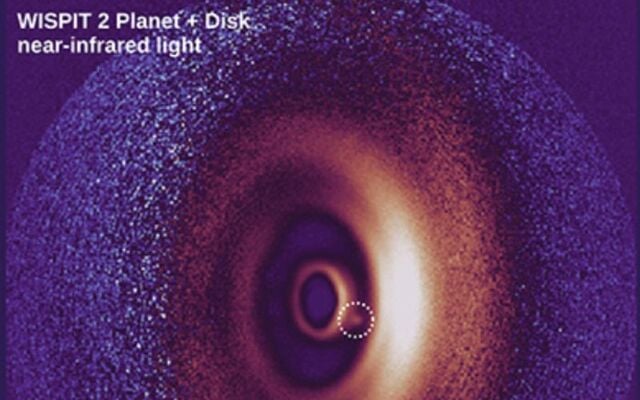An international team including University of Galway astronomers has discovered WISPIT 2b—a newly forming gas giant embedded in a dazzling multi-ringed dust disk around a young, Sun-like star. This rare snapshot into planetary birth promises to reshape our understanding of how solar systems—including our own—take shape.
In a discovery dubbed unexpected and exceptionally beautiful, astronomers co-led by University of Galway have detected WISPIT 2b, a planet just 5 million years old, still glowing hot amid the dust and gas of its birth environment.
The breakthrough was made using the European Southern Observatory’s Very Large Telescope (ESO’s VLT) in Chile. Instead of finding a lone point of light, the team stumbled upon a stunning multi-ringed protoplanetary disk, prompting urgent follow-up imaging that confirmed the presence of WISPIT 2b within a gap in the rings.
Dr Christian Ginski of the University of Galway recalled: “When we saw this multi-ringed disk for the first time, we knew we had to try and see if we could detect a planet within it … so we quickly asked for follow-up observations.”
A rare glimpse into planetary infancy
This is only the second confirmed detection of a planet at such an early stage around a Sun-like star. The disk itself is enormous, stretching across 380 times the Earth–Sun distance, offering scientists a remarkable laboratory for studying planet–disk interactions.
The young planet is still accreting gas, visible in both infrared and optical light. Lead author Richelle van Capelleveen, a PhD student, said: “Discovering this planet was an amazing experience – we were incredibly lucky. This system will likely be a benchmark for years to come.”
Read more
Galway students involved in the project described the work as “career-defining” and “mind-blowing,” underscoring the pride in Irish research’s role in a global scientific milestone.
Why this matters closer to home
Irish pride in the stars: University of Galway is leading international discovery teams, putting Ireland on the map for cutting-edge astronomy.
Echoes of our own Sun: WISPIT 2b’s host star is a young version of our Sun, offering hints about how Earth and the other planets in our solar system formed.
From Galway to the galaxy: For Irish-American readers, this is a reminder of the growing reach of Irish science—Irish students and researchers are contributing to discoveries that change how we understand the universe.
A link to heritage: Irish culture has long been steeped in sky-watching, from Celtic mythology to monastic astronomy. Today’s breakthroughs carry that tradition into the 21st century.




Comments